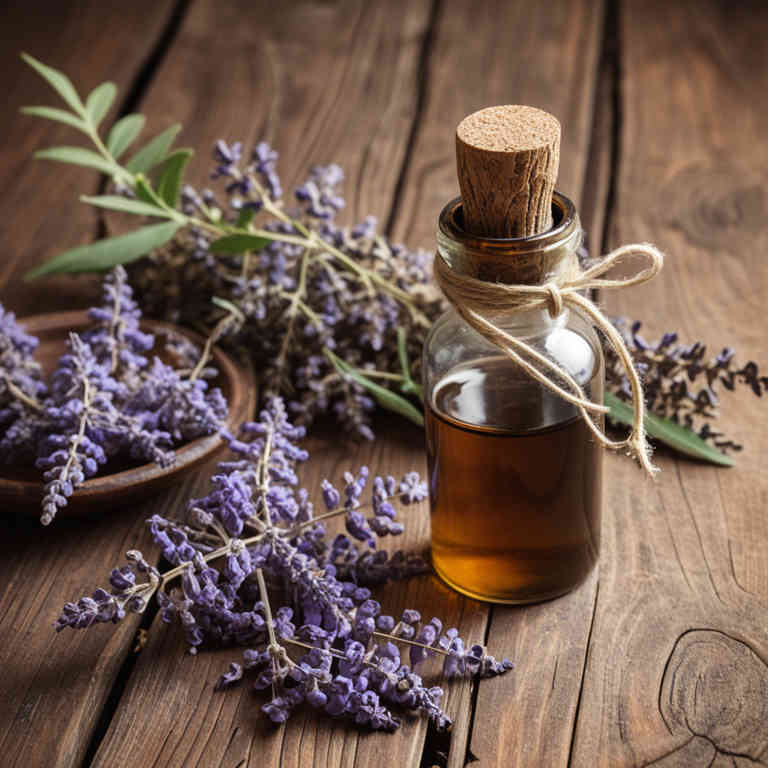Vitex agnus-castus tincture for medicinal use

Vitex agnus-castus tincture is a concentrated herbal preparation made from the dried fruits of the chaste tree, also known as Vitex agnus-castus.
It is commonly used in herbalism to support hormonal balance, particularly in women, by regulating menstrual cycles and alleviating symptoms of premenstrual syndrome. The tincture is often taken orally in small doses, typically diluted in water or another liquid. It is believed to influence the pituitary gland and may help with conditions such as irregular periods, mood swings, and menopausal symptoms.
Due to its potent nature, it is usually recommended under the guidance of a qualified herbalist or healthcare provider.
Uses
Vitex agnus-castus tincture has been used to support hormonal balance, particularly in women, for centuries.
Historically, it was valued in ancient Greece and Rome for its purported ability to regulate menstrual cycles and ease symptoms of premenstrual syndrome. Traditional herbal medicine systems, such as those in Europe and the Middle East, have long employed it to address issues like infertility and menopausal symptoms. In modern times, it is commonly used as a natural remedy for hormonal imbalances, mood regulation, and breast discomfort.
Scientific research continues to explore its potential benefits, though more studies are needed to fully understand its mechanisms and efficacy.
Benefits
Vitex agnus-castus tincture has health benefits such as supporting hormonal balance, particularly in women, by regulating menstrual cycles and alleviating symptoms of premenstrual syndrome (PMS).
It is also used to promote emotional well-being and reduce stress due to its adaptogenic properties. The tincture may help with infertility by supporting reproductive health and improving ovulation. Additionally, it has been traditionally used to ease symptoms of menopause, such as hot flashes and mood swings.
As a natural remedy, Vitex agnus-castus tincture is often sought for its holistic approach to wellness.
Constituents
Vitex agnus-castus tincture active constituents include compounds such as flavonoids, iridoids, and essential oils.
These components are believed to support hormonal balance by influencing the pituitary gland and hypothalamus. The flavonoids may help regulate menstrual cycles and alleviate symptoms of premenstrual syndrome. Iridoids, like aucubin, are thought to have adaptogenic properties that reduce stress and support overall well-being.
Essential oils contribute to the tincture's aromatic profile and may enhance its therapeutic effects when used in aromatherapy.
Preparation
To make Vitex agnus-castus tincture, begin by gathering dried Vitex berries, which are typically harvested when they are fully ripe and dried in a cool, dark place.
Next, place the dried berries in a clean glass jar and cover them completely with high-proof alcohol, such as vodka or grain alcohol, ensuring the ratio is approximately 1 part herb to 5 parts alcohol. Let the mixture sit in a dark place for 4 to 6 weeks, shaking the jar gently every few days to promote extraction. After the steeping period, strain the liquid through a fine mesh strainer or cheesecloth to separate the liquid from the plant material.
Finally, store the tincture in a dark glass bottle in a cool, dry place, and label it with the date and contents for future reference.
Side Effects
Vitex agnus-castus tincture may lead to hormonal imbalances, particularly in women, due to its phytoestrogenic properties.
It is commonly used for menstrual regulation and menopausal symptoms but can cause irregular menstrual cycles or exacerbate existing conditions. Possible side effects include gastrointestinal discomfort, headaches, and breast tenderness. Long-term use may interfere with fertility or thyroid function.
Individuals with hormone-sensitive conditions should consult a healthcare provider before use.